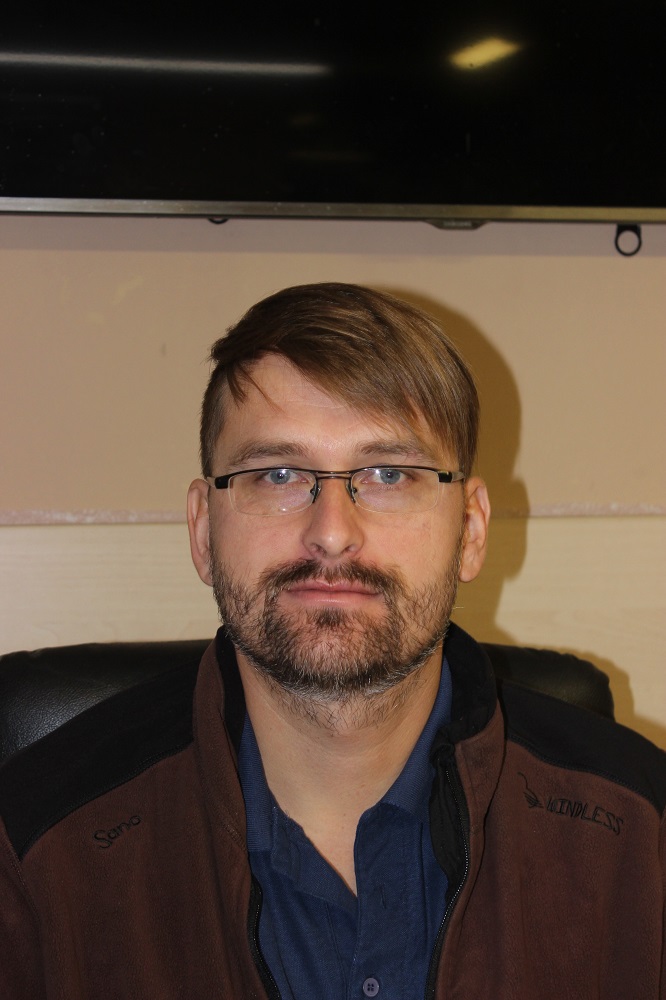MAMADOS SOW FEEDING - BENEFICIAL IN USE ON OUR FARM
AGRA Řisuty has been using the new MamaDos technology for suckling sows since last autumn. As the piglets grow, the feed ration and the number of feedings for the suckling sows increase automatically. To ensure a sufficient individual feed supply by the feeding system the sows should be able to request the portions by themselves via a sensor. The main objective of this investment was to facilitate the work of the farm workers and to maintain the required condition and health of the nursing sows.
Have these goals been achieved? After a year of operation, we asked the head of animal production, Mr. Pavel Vicenec.
Advantage for the farm workers
“Our expectations were met 100%. With the new technology and advanced electronics, we have almost eliminated errors from human factors, “ emphasizes Pavel Vicenec."Manually increasing or reducing the amount of feed was often neglected by the farm workers. It meant that the sows stayed on a certain amount of feed mixture longer than they should according to the feed curve."
Originally, the farm workers in the farrowing house had to wait until half past four in the afternoon when the sows received the last dose of three daily servings. Today the sows will request the portions by themselves at eight o'clock in the evening as well. And when the farm work is finished, the worker can leave at two in the afternoon. After their initial experience, the sows quickly got used to the free movement sensors and now they decide for themselves whether they want another portion or not. The amount of leftover feed in the trough has also reduced significantly, which is reflected in cheaper breeding figures.

Benefits for sows
With the rationed feeding technology previously installed at the farm, the sows were significantly emaciated after weaning, which had a negative effect on the oestrus and insemination. This is not the case after the introduction of MamaDos technology. The fat thickness, which has been measured in sows since 2017, has increased on average from less than 13 mm to 15 mm and more with the same number of weaners. The sows therefore still have a sufficient supply of energy. At the moment on Farm Drnek an average of 12.5 weaners are weaned per sow and litter, with an average fat thickness of 15.34 mm for sows, which, according to the head of animal production, is reflected in ideal conditions for Oestrus and subsequent pregnancy.
Farrowing increased from 83% to 90% and the birth rate is 88%. The milk yield of sows has increased significantly. On the twenty-eighth day, weaners were originally weaned weighing 7.5 to 8 kg, now they are 9 kg or more at weaning. Another advantage of the new technology is the larger number of feedings over a longer timespan, without extending the working hours of the farm workers. With the former rationed dry feed system, sows were not even able to physically receive such a large amount of feed in the short period of time available.
According to Pavel Vicenc, the new MamaDos technology also helps identify health problems in sows. The farm worker has an overview of how each sow has fed over the past seven days, both in kilograms and as a percentage. This information is compared with the limit values and is color-coded. When the sow has received 70% or more of the feed of the limit value, the indicator is green, at 40 to 70% it is yellow and an intake below 40% of the limit portion is red. Red signals a problem with a certain sow, which usually already has a high temperature and the farm hand can react immediately.
Easy control and maintenance
The modern MamaDos technology not only shows the daily feed consumption of each sow to the farm staff, but also the amount that was consumed during a feeding, going back for 7 days. However, it also gives the breeder other information, namely the electrical resistance of the electric motors that drive the metering screw. The correct resistance is marked in green, which signals that the screw works properly and the sow receives the feed. When the resistance exceeds a certain limit, it will be highlighted in red. The operator is thus made aware of a dosing problem and knows it is necessary to check or clean the screw. The control is simple and 100% efficient, and the entire system is easy to maintain.
"On our farm we have two Compident ESF Electronic Sow Feeding stations that ensure the correct feeding of inseminated and pregnant sows. The ideal nutrition for nursing sows is made possible by the MamaDos technology, which is connected to the original computer of the feeding stations", explains Pavel Vicenec. In conclusion “After one year of operation, I can confirm that the MamaDos system guarantees easier and faster regeneration of the sows after weaning, which is necessary for a new reproductive cycle to start and at the same time the system is absolutely reliable."
Fast return on investment
The total investment in the MamaDos system was 860,000 Czech crowns. The return on investment can be calculated based on the milk yield of the sows or the weight of the piglets at the time of weaning. Before the investment, the piglets had an average weight of 8 kg, now they weigh 9 kg. With an annual production of 5,100 piglets, this corresponds to an increase of 5,100 kg, which at a company price of 120 CZK / kg means that piglet increase in the farrowing house corresponds to 612,000 CZK per year. MamaDos has also improved sow oestrus and fertility, which cannot be accurately quantified economically.



